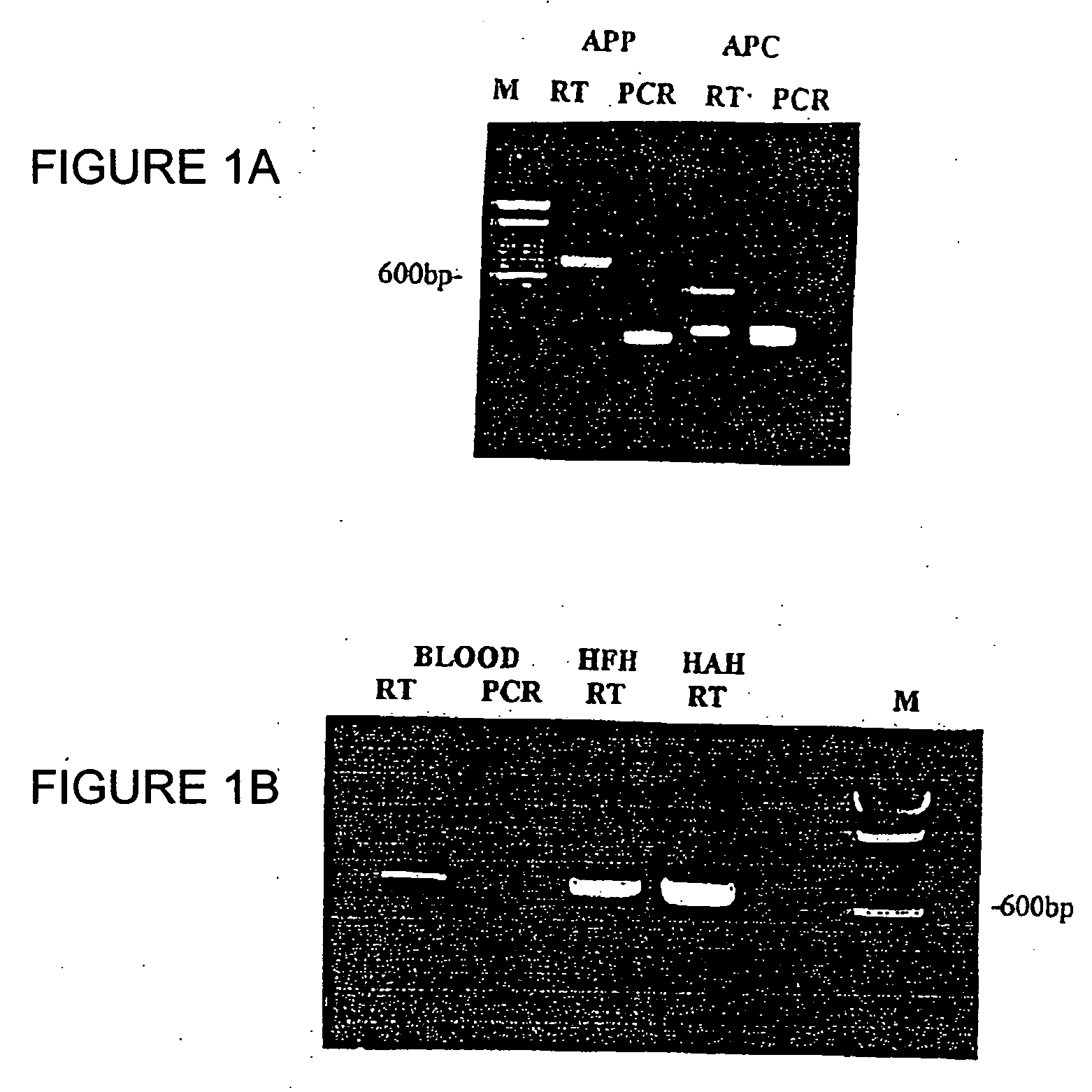Method for the detection of osteoarthritis related gene transcripts in blood
a gene transcript and osteoarthritis technology, applied in microbiological testing/measurement, biochemistry apparatus and processes, climate sustainability, etc., can solve the problems of large samples, costly and time-consuming separation of cell types within the blood, and prior art deficient in non-invasive methods of screening for tissue-specific diseases
- Summary
- Abstract
- Description
- Claims
- Application Information
AI Technical Summary
Benefits of technology
Problems solved by technology
Method used
Image
Examples
example 1
Construction of a cDNA Library
[0212] RNA extracted from human tissues (including fetal heart, adult heart, liver, brain, prostate gland and whole blood) were used to construct unidirectional cDNA libraries. The first mammalian heart cDNA library was constructed as early as 1982. Since then, the methodology has been revised and optimal conditions have been developed for construction of human heart and hematopoietic progenitor cDNA libraries (Liew et al., 1984; Liew 1993, Claudio et al., 1998). Most of the novel genes which were identified by sequence annotation can now be obtained as full length transcripts.
example 2
Catalogue of EST Database
[0213] Random partial sequencing of expressed sequence tags (ESTs) of cDNA clones from the blood cell library was carried out to establish an EST database of blood. The known genes as derived from the ESTs were categorized into seven major cellular functions (Hwang, Dempsey et al., 1997). The preparation of the chondrocyte-specific EST database is reported in WO 02 / 070737, which is hereby incorporated by reference in its entirety.
example 3
Differential Screening of cDNA Library
[0214] cDNA probes generated from transcripts of each tissue were used to hybridize the blood cell cDNA clones or chondrocyte cDNA clones (Liew et al., 1997; WO 02 / 070737). The “positive” signals which were hybridized with P-labeled cDNA probes were defined as genes which shared identity with blood and respective tissues. The “negative” spots which were not exposed to P-labeled cDNA probes were considered to be blood-cell-enriched or low frequency transcripts.
PUM
| Property | Measurement | Unit |
|---|---|---|
| pH | aaaaa | aaaaa |
| volume | aaaaa | aaaaa |
| volume | aaaaa | aaaaa |
Abstract
Description
Claims
Application Information
 Login to View More
Login to View More - R&D
- Intellectual Property
- Life Sciences
- Materials
- Tech Scout
- Unparalleled Data Quality
- Higher Quality Content
- 60% Fewer Hallucinations
Browse by: Latest US Patents, China's latest patents, Technical Efficacy Thesaurus, Application Domain, Technology Topic, Popular Technical Reports.
© 2025 PatSnap. All rights reserved.Legal|Privacy policy|Modern Slavery Act Transparency Statement|Sitemap|About US| Contact US: help@patsnap.com



